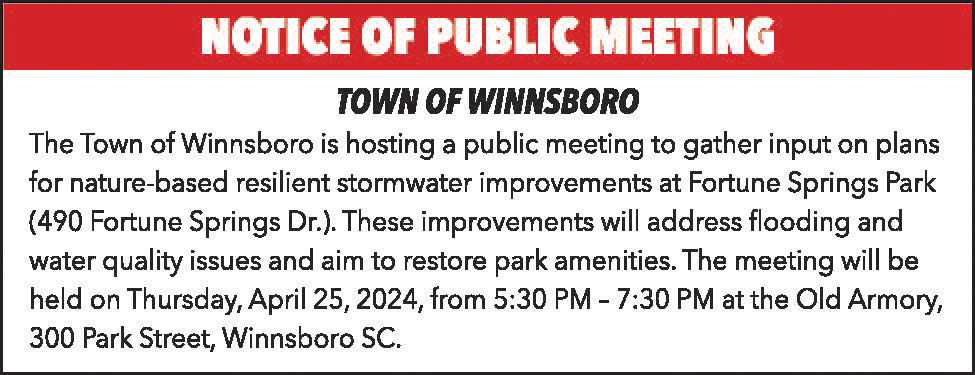
The faux windows went up last summer, but Tuesday night the debate was less about Mt. Zion’s exterior and more about what – or who – could be residing in its interior.
WINNSBORO (Feb. 19, 2016) – Emotions ran high Tuesday night as residents spilled out of Town Council chambers and into the hallway for what may have been the last appeal for the life of Mt. Zion.
Leading the charge for demolition was Marie Rosborough, who presented Council with what she said was a survey she conducted last week of neighborhood residents pitted with the question of whether or not they favored a plan to convert the old school building into senior living apartments. All but two respondents, she said, were flatly opposed to the notion.
“We don’t want apartments,” Rosborough said. “It needs to be torn down. We ask Town Council to please close this issue, tear the building down and move on to some more pressing issue you have. You’ve done everything you can do.”
Boyd Brown, who delivered to Council last Friday a letter of intent from developer Rob Coats, did his best to quell fears that Mt. Zion, even if intended for market-level senior living apartments, might end up as a low-income housing project.
“This is not low-income housing. I’ve heard that from about three or four people today,” Brown told Council. “The Banyan Foundation (Coats’s non-profit organization) does do low-income housing projects – fact. This project does not score in the H.U.D. database to qualify for the 4 percent tax credits for low-income housing, nor does it score the other tax credits for low-income housing.”
Mayor Roger Gaddy, however, subjected Brown to intense interrogation on the potential use of federal money on the project. Brown said that, as far as he knew, there would be no federal loans or grants, but that federal and state historic tax credits may be applied.
“One of the Council’s concerns is if there’s any federal money involved,” Gaddy said, “any taxpayer money involved and the market-value apartment – it’s not even zoned for that now – if that were to occur and it not be successful and the federal government wants their money back, then they tell you you’re going to open it up to low-income housing. Council is not interested in even talking to anybody that’s going to use any federal money that’s going to put that neighborhood at risk.”
Brown acknowledged Gaddy’s concerns, and said that federal historic tax credits were different than loans and grants.
“We can do a workshop on federal tax credits and state tax credits,” Brown said, “and explain how that is what is driving all this growth in Columbia and even places like Edgefield and Lake City.”
Dina Borda, an attorney living on Bratton Street, countered Brown’s claims by producing articles of incorporation for a company called The Peaks at Raleigh, Inc., filed in N.C. in 1998. The Peaks later became the Banyan Foundation, she said, and according to the articles was almost exclusively involved in low-income housing projects.
“I am not saying I am against any kind of development,” Borda said. “I would just like to know the scope and method of execution before any contract is executed so that we can make an informed decision as to what’s going to occur. But I am absolutely against low-income housing.”
Brown rebutted later, noting the date (1998) and the name on the articles, but said Coats does represent some of the people named in the articles.
“These article of incorporation are from North Carolina. They are now in Alabama. This is dated,” Brown said. “You can Google search anything and you’re going to find all sorts of information. But I am here to tell you this is not going to be low-income housing. During the due diligence period if you want to go so far as to put that in the contract, if we ever get to that, I’m sure he will be just fine putting it in the contract.”
But Gaddy said a contract means nothing if the federal government is involved.
“I’m telling you the federal government is not going to loan him a dime for this project,” Brown said.
“I don’t want any association, period,” Gaddy replied.
“The council is going to have to have significant reassurance – I mean significant reassurance – that there would not be one iota of a chance and there would be some ramifications liability-wise if that would occur,” Gaddy continued. “I think that certainly is a major concern when you tell us the Banyan Corporation is the one doing it, from my standpoint, and the (articles) say that (low-income housing) is their sole purpose.”
Vickie Dodds, Chairwoman of the Friends of Mt. Zion Institute (FOMZI), said she agreed with opposition to low-income housing. But what she didn’t understand, she said, was the feeling from those who “just want it torn down for the sake of tearing it down.”
Responding to a point made by Faye Johnson, that the buildings were not historic buildings, Dodds said the old school had been approved for submission of placement on the National Historic Register.
“All we have left to do it is finish the editing of the actual application,” Dodds said, “which cannot happen unless they (the Registry) qualify it as permissible to be on there. They consider anything over 50 years to be historic.”
Betty Gutschlag also spoke up for Mt. Zion, saying it was an opportunity for retiring seniors to stay in their community. But when Rosborough spoke up again, she made it clear that it made no difference to the majority of respondents to her survey what type of apartments Banyan has in mind.
“The residents who signed it (her survey) said ‘No, we don’t want Mt. Zion turning into apartments’. No conditions,” Rosborough said.
Rosborough was interrupted by shouts from the back row.
“Do you speak for everybody in the community?” Pelham Lyles asked. “The whole town?”
Gaddy lowered the gavel and Rosborough attempted to continue, but Lyles interrupted again, shouting, “You didn’t put it in everybody’s mailbox!”
When Gaddy called Lyles out of order, she exited the chambers.
“We would hope you would consider what the community wants,” Rosborough finally concluded. “We’ve been talking about this for 15 years, at least. Now you want to add some more of this same over and over. You need to put an end to this because it will never end if you don’t.”
Brown asked Council for 180 days for Coats to perform his due diligence on the project.
“I’m not going to be unrealistic about this,” Brown said. “If there comes a point during that 180-day due diligence period where we just realize it cannot be done, we’re going to call you that day and tell you.”
Gaddy said after the meeting that Council would consider Brown’s request.










